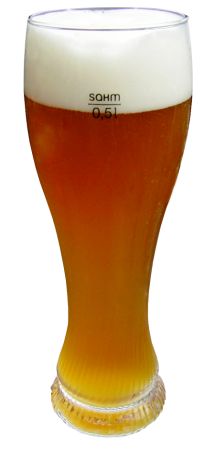
Our laboratory deals with education, research, and development in the fields of brewing and malting. Research activities investigate:
- Health-promoting compounds in brewing raw materials (hops, barley and beer
- Microbiological, colloidal, and sensorial stability of beer
- Microbial contaminants in beer and raw materials
- Authentication of beer and brewing raw materials
- Study of the properties of brewing yeast
- Formation, stability, and decomposition of beer foam
- Development of new products
- Development of new analytical methods
Research group members
- Prof. Pavel Dostálek, PhD
- Prof. Tomáš Brányik, PhD
- Marcel Karabín, PhD
- Lukáš Jelínek, PhD
- Michaela Poštulková, MSc (doctoral student)
- Tomáš Kinčl, MSc
- Jakub Nešpor, MSc (doctoral student)
- Kateřina Štulíková, MSc (doctoral student)
- Rudolf Jung – Brewmaster of University brewery
- Ivana Dušková
Main Research Topics
Increasing the Shelf Life of Unfiltered Beers
A consequence of increasing the production of unfiltered beer is the need for a significant extension of their shelf lives. For this purpose, we test the use of high hydrostatic pressure in plastic barrier packages. Moreover, we are also investigating the development and subsequent application of modular flow minipasterizeur for use in micro- and mini-breweries.
Increasing the Colloidal Stability of Czech Beers
Czech beers have higher polyphenol content and polypeptides than many other beers, and thus they tend to form colloidal haze. Colloidal stabilization is typically used for the sorption of synthetic stabilizers to extend shelf lives. We have developed a new generation of adsorbents capable of removing one of the precursors to colloidal haze. For this purpose, waste materials from the production of hop extracts and pellets are also being tested, which combines the advantages of increasing colloidal stability and preserving the antioxidant effects of beer.
Development of Bottom Yeast Strains with Improved Technological Properties
As a result of an expression of the cell wall, yeast with inserted genes produces anchored proteins with two functions. The first is a higher affinity towards polyphenolic compounds, where a microorganism may serve as an agent for increasing the colloidal stability of beer. The second protein is an enzyme catalysing the conversion of 2-acetolactate to acetoin. Accelerating this reaction would greatly simplify the process of maturing and reduce the risks associated with excessive levels of diacetyl, which causes a buttery flavour in beer. This research is conducted in collaboration with the Department of Biochemistry and Microbiology.
Biologically Active Substances of Hops
Used in folk medicine for several thousand years, hops contain substances with various beneficial health effects. These substances, which are also found in beer, can be isolated from hops and used in food supplements and final-stage drugs. Currently, we are testing methods related to the isolation and biotransformation of prenylated flavonoids (in particular, xanthohumol and 8-prenylnaringenin), including their strong phytoestrogenic properties that should facilitate their application in the suppression of menopausal symptoms.
Study of Beer Foam and Prediction of Gushing and the Possibilities of Its Suppression
Beer foam and beer foam stability are important organoleptic characteristics associate with beer but with a significant negative effect: gushing. Research into gushing includes methods for studying the causes and intensity of this phenomenon and the study of hydrophobins, primary triggers of gushing. We have developed a pressure column that enables our research of this complex phenomenon. We aim to develop a better understanding of the fundamental mechanisms of gushing and create proposals for its suppression (applying parasitic fungi to suppress the contamination of microflora in malt, which forms hydrophobins).
Study of Microbial Contamination in Breweries
The most widespread forms of contamination in breweries involve a microbial consortium form of biofilms. The scope of the project is to identify anaerobic beer spoilage bacteria (particularly from the Pectinatus and Megasphaera families) and experimentally study how they adhere to their chosen representatives on solid surfaces. By understanding the adhesion mechanism used by these species, we hope to develop new methods for suppressing adhesion or for increasing the effectiveness of the cleaning of surfaces in food processing plants.
Development of New Analytical Methods and Their Validation
Each beer is unique, and, because of this, we can analyse the composition and content of individual volatile compounds that characterize the origin of the raw materials used to produce it, its age, and immediate sensory conditions. We can even predict changes to a beer over time. New methods for conducting such analysis are being developed, mainly based on solid-phase microextension (SPME-GC-MS) for the determination of higher alcohols, esters and acids, and terpene compounds. Newly developed methods are then used to solve other research topics for the entire laboratory.
Use of Innovative Microorganisms for the Production of Beer
Increasing market competition has led breweries to expand the assortment of beers they offer. One promising possibility for the development of new products is the use of innovative microorganisms during the fermentation process. One such group of microorganisms is probiotics, which are beneficial to human health, improving immunity, and maintaining a balance of intestinal microflora. The aim of this research is to obtain a set of microorganisms with probiotic properties that are able to ferment brewing wort and/or to tolerate an environment of traditional and non-alcoholic beer without reducing viability. We are also studying the fermentation capacity of selected microorganisms, the formation of flavour compounds, and the effect of the presence of microorganisms on non-traditional beer flavour and colloidal stability.
Collaboration
- Plzeňský Prazdroj Inc., Plzeň, Czech Republic
- Budějovický Budvar n.c., České Budějovice, Czech Republic
- Pivo Praha Inc., Praha, Czech Republic
- Biomedica Ltd., Praha, Czech Republic
- TU Berlin, Berlin, Germany
- University of Minho, Braga, Portugal
- University of Porto, Porto, Portugal
- University of Sassari, Sassari, Italy
- University of Zagreb, Zagreb, Chorvatia
- University of Valladolid, Palencia, Spain
